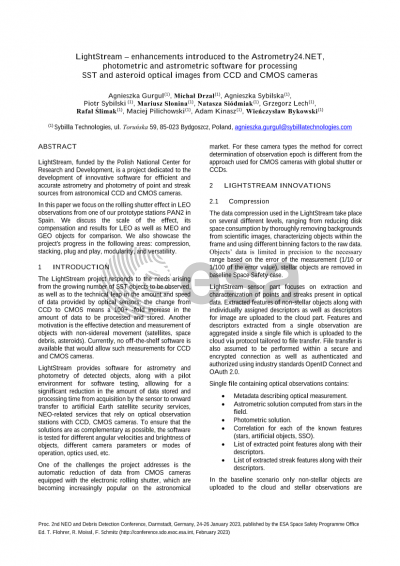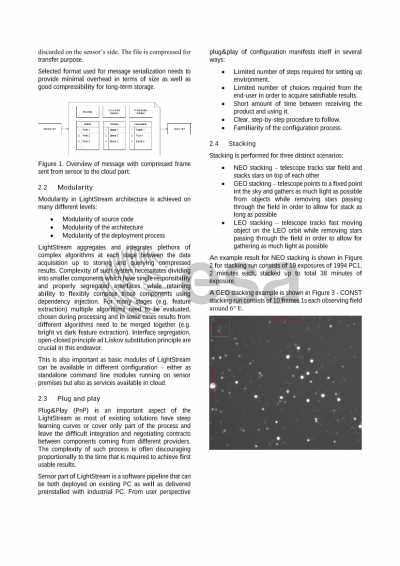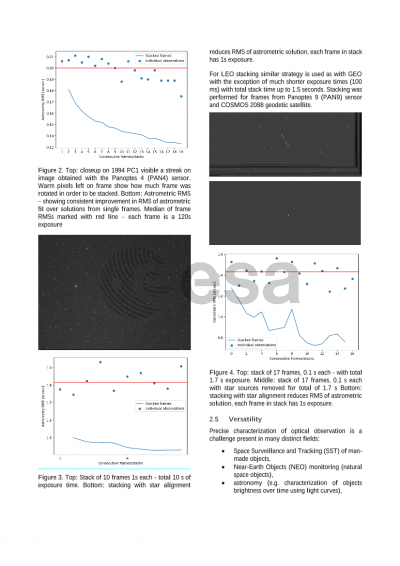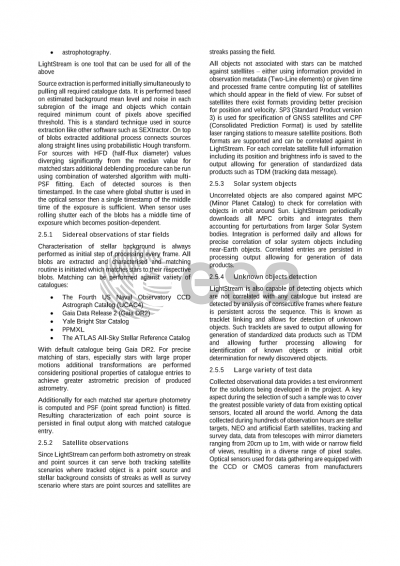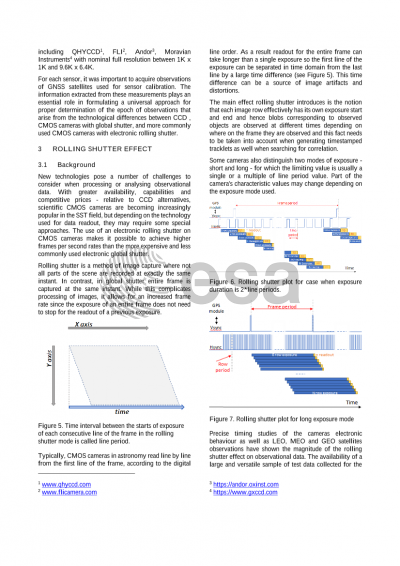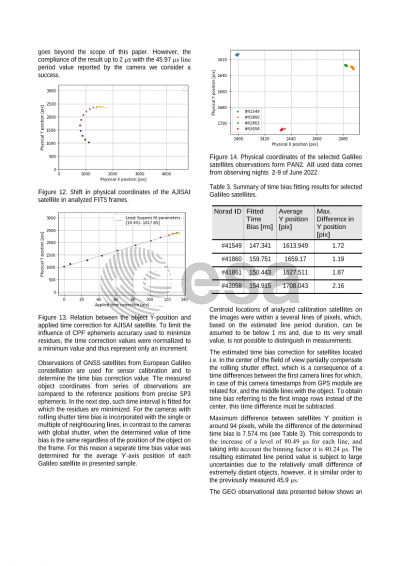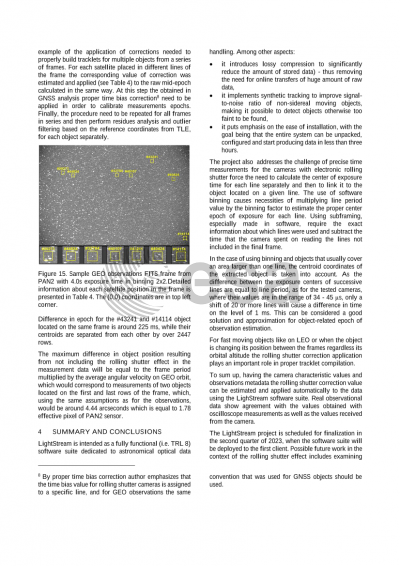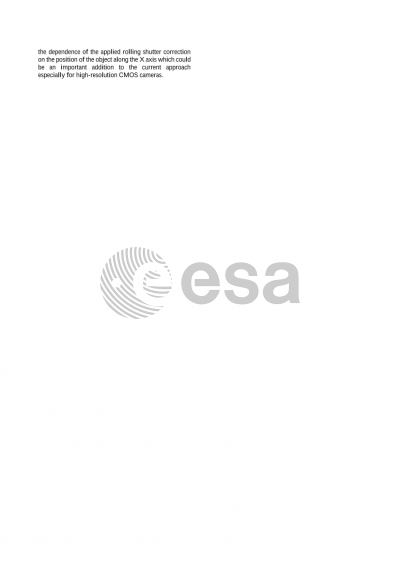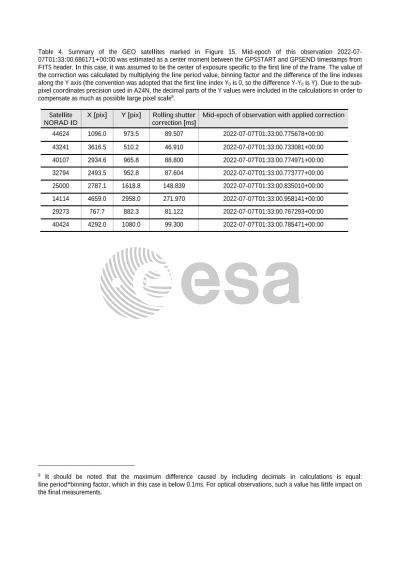Document details

Abstract
LightStream, funded by the Polish National Center for Research and Development, is a project dedicated to the development of innovative software for efficient and accurate astrometry and photometry of point and streak sources from astronomical CCD and CMOS cameras.
A unique feature of the project is its versatility, as there are no widely available products on the market that offer the capabilities of the developed software. The source detection and disentanglement of visually connected objects techniques improved computational efficiency and reduction of the amount of stored data through the use of lossy compression, as well as the use of the modern software standards and compliance with the recommended data exchange standards, are a response to the ever-increasing need for fast and effective processing of observational data and timely delivery of high-quality products.
New technologies pose a number of challenges to consider when processing or analyzing observational data. With greater availability, capabilities and competitive prices - relative to CCD alternatives, scientific CMOS cameras are becoming increasingly popular in the SST field, but depending on the technology used for data readout, they may require some special approaches. The use of an electronic rolling shutter on CMOS cameras makes it possible to achieve higher frames per second rates than the more expensive and less commonly used electronic global shutter.
Precise timing studies of the cameras electric behaviour as well as LEO, MEO and GEO satellites observations have shown the magnitude of the rolling shutter effect on observational data. The availability of a large and versatile sample of test data collected for the project allows for correlation studies between the position of the objects on image and measured astrometric position compared to the 'ground-truth' position of an object determined from SP3 or CPF ephemeris. The rolling shutter effect compensation plays a key role when analyzing a series of SST observations, especially for high-resolution images, fast-moving objects or images recorded in motion.
In our contribution, we will focus on the rolling shutter effect in LEO observations from one of our prototype stations PAN2 in Spain. We will discuss the scale of the effect, its compensation and results for LEO as well as MEO and GEO objects for comparison. We will also showcase the project's progress in the following areas: compression, synthetic tracking, plug and play, modularity, and versatility.
Preview
